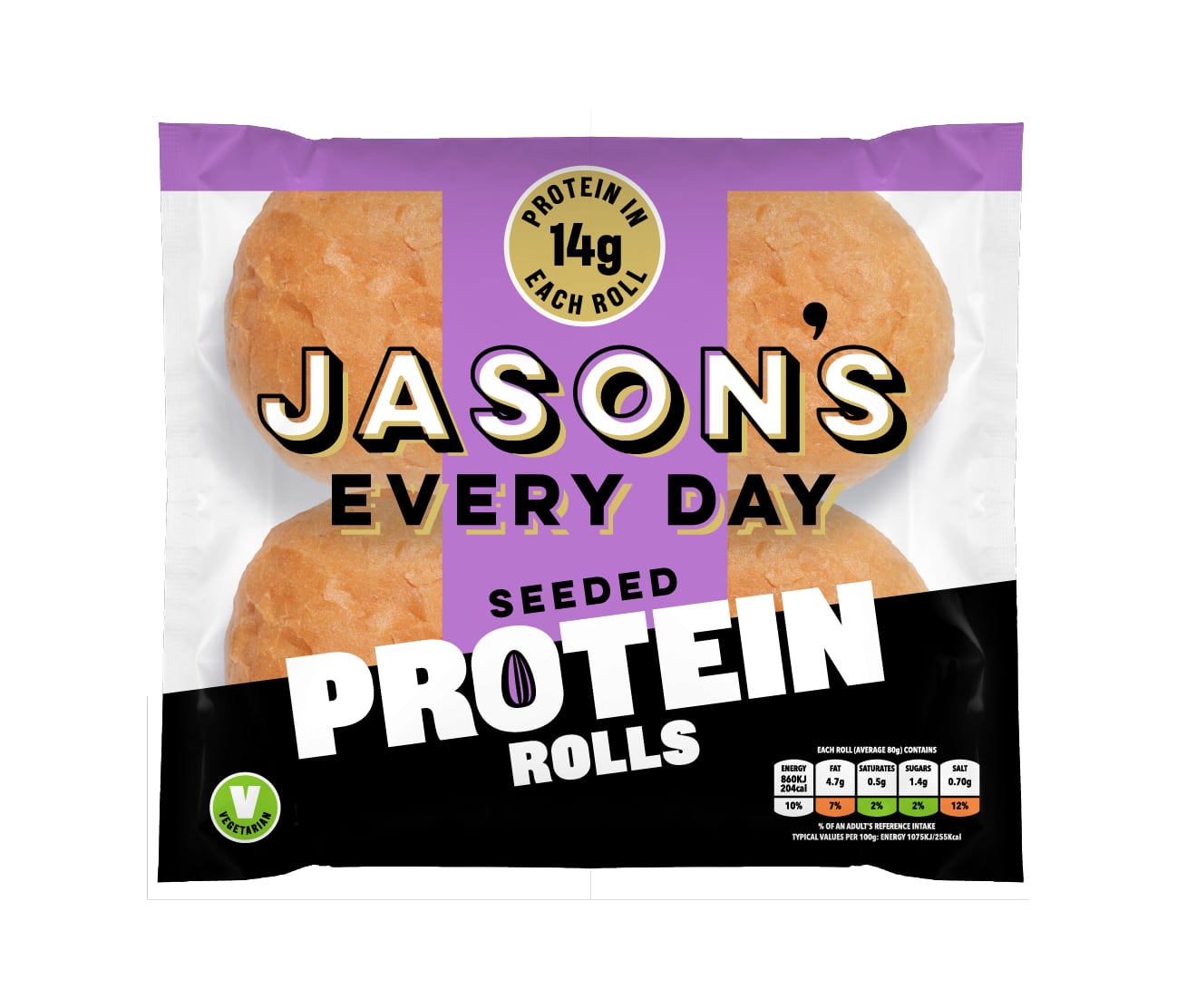There are five major trends impacting the food and drink space, according to Healy Group’s experts. These are climate consciousness, healing plates, mood makers, ingredient integrity, and authentic experiences.
Trend 1: Climate conscious consumer
“Sustainability as a trend is not new, but it is evolving,” Roni Newman, head of marketing at the Healy Group said. “It was always a consideration, then it became a bit of a trend, but now it’s actually an expectation. It’s not the niche group or early adopters, it’s everyone.”
And according to Healy Group’s research, 73% of consumers want the food industry to do more for sustainability.
“They want us to be more transparent, they want us to be clear about what we’re doing, the practices that we’re taking, and just be conscious of the impacts that we have on the environment.”
Going beyond that, whilst a much lower number, some consumers are already taking sustainability in their own hands. More than a third (36%) say they are making more sustainable choices with their food shopping.
“If they have two products in their hand, at the same price, and one’s got a sustainability story, that’s enough to sway them to buy that over another.”
One ingredient that has become the heart of the sustainability conversation is cocoa, due to the impact climate change is having on yields, alongside rising prices and ethical considerations.
In the last 18 months, the cost of cocoa has risen by more than 470%.
“No one is going to give up chocolate – I certainly won’t – but it’s about how we can still deliver that same indulgence, that same experience that you expect with chocolate but in a way that’s more resilient and sustainable.”
One option Healy Group presented at its innovation day was PrimaFi Cocoa – a micronised cocoa fibre that is derived from upcycled cocoa bean shells.
The resulting product is an ‘all-natural’, high fibre product – double that of a typical cocoa powder – that can be used in any application where cocoa powder is used. For example, within sweet bakery, chocolate and confectionery, desserts and sauces, and nutritional shakes and premixes.
Trend 2: The scrutiny on ingredients
Over the last few years, the topics of clean label and ultra processed foods (UPF) have gripped consumer attention.
Whilst the definition of UPFs remains unclear, it is still having a big impact on the food and drink sector. Whereas previously consumers might be drawn in by pretty packaging or an exciting concept, today’s shopper is taking the time to scrutinise the label.
According to Healy Group, more than half (59%) of global consumers have started paying more attention to ingredient lists in the past year, with 54% doing so to reduce their intake of ‘bad’ ingredients.
Whilst it’s difficult to know what ‘bad’ looks like to consumers, these assumptions are often driven by the likes of social media and news headlines.
“They’re searching for certain ingredients based on certain things they’ve seen on TikTok or Instagram, or really sensationalist news articles,” Newman said.
The impact of UPFs and ingredient transparency has been filtering onto store shelves, with more and more brands showcasing their short ingredients lists front-of-pack (e.g. M&S ‘Only’ range, Heinz pasta sauces) or at the very least calling it out (e.g. Plenish ‘just 3 natural ingredients’ claim on its almond milk).
Newman highlighted Kind as a key example: “Kind bars have just launched new branding – it’s the same product, nothing’s changed in the ingredients – but they have added the slogan ‘nothing to hide’. They’re asking consumers to turn it over and look at their ingredients.”
The Healy Group suggests clean alternatives to additives, such as clean label starches, functional fibres, reduced sodium salt, natural shelf-life extenders and plant proteins, as a way of keeping functionality but delivering on trends.
One example ingredient is from Millbio, which makes X-Tra Guard – a botanical extract (from rowanberry) with natural organic acids that can be used to extend shelf life.
In a trial with houmous, 0.2% potassium sorbate (a more traditional shelf life extender) vs 0.7% X-Tra Guard, both stayed fresh over the course of 21 days when stored in the fridge at -2.8C.
Rowanberry extract can already be found within ingredients lists, such as M&S chocolate fudge cake, Good Good Strawberry Jam, and non-dairy cheese Violife’s original slices.
Trend 3: Authentic experiences
This trend is stretching across multiple avenues, with consumers looking for authenticity in taste, experience, texture and labelling.
Within this trend, Newman focused on flavour – as we all know, taste is king.
“87% of consumers consider flavour to be ‘very’ influential when buying food products,” she said.
“That’s probably not very surprising – the thing that is more surprising is that 32% believe healthy food tastes bland and boring.”
Given the drive towards health, this presents an excellent opportunity for the sector to innovate with flavour and mouthfeel within this category.
“There’s a gap here to be bridged. What we would suggest is to do everything within your power and remit to make your healthier foods more appealing.”
One of the key examples given in this space was Kikkoman, which has a range of natural yeast extracts that offer a rich umami taste.
Healy Group’s research also showed how important a story is to consumers, with 33% saying they’d like to see more story-based marketing around food origins.
Tesco has been an early adopter of this trend, with its Food Love Stories campaign, first launched in 2017.
Meanwhile, a great example of good storytelling among food brands is Ramona’s – a brand which is built upon the founder Ramona Hazan’s memories of the Mediterranean cuisine she enjoyed growing up.
Ramona’s has grown immensely over recent years, seeing 80% growth in sales year on year, taking sales from £10.2 million to £18.3 million (Nielsen data 52w/e 22.2.25). In 2022, it was responsible for 19% of the branded category volume in hummus and today that’s grown to 53%.
Trend 4: Healing plates
Health is another trend that tends to crop up each year – but Newman says what is newer is a shift in behaviour related to food and health.
The group’s research found that 65% of consumers describe themselves as ‘proactive’ about their health, up from 50% prior the pandemic.
“Previously consumers would wait till they got ill to say, ‘I should probably work on my digestive health’. Now they’re trying to be more proactive – and one of the ways they’re doing that is through food.
“The pandemic made everyone really aware of our health and how fragile it is.”
Key concerns centred around health and ingredients are salt/sodium and sugar reduction.
When asked what they had changed in their diet within the last year, Healy Group found 45% say they’ve reduced their calorie intake, 24% their fat intake, and 46% their salt intake.
The company offered two examples of innovative ingredients on the market to help deliver to these trends.
One is from Saltwell – which offers a natural sea salt from the Atacama Desert with 35% less sodium in each grain.
The other is from Sensefi – which offers a multifunctional, new hydrocolloid based on oats which binds up to 25 times its own weight in water. The resulting product is a highly functional but stable fat-like paste with desirable mouthfeel and fat-mimetic properties.
Trend 5: Food, mood and gut
There are a lot of factors at play at the moment which is creating a sense of unease among people – from geopolitical uncertainty, to climate change, to the cost-of-living crisis.
This has driven up interest in looking after one’s health both physically and mentally, with 34% wanting to address their mental wellbeing and 49% their digestive health; and 47% associating a ‘good’ gut with improved mood.
Research from FMCG Gurus conducted in December 2024, found that a high number of people are experiencing stomach issues, with almost half (47%) saying the suffer with gas and 42% with bloating.
At the same time, awareness of the gut microbiome has grown 21% between 2022 and 2024, with 43% now mindful of it. The percentage of consumers with awareness of the gut microbiome’s link to wellness has also seen growth.
“We’re seeing a big surge in gut friendly products – this is across the board, almost in every category.
“It seems to be accelerating and it’s not going anywhere.”
Among the solutions highlighted by Healy Group is Synbiotics – a combination of pre, pro and postbiotics, based on Bacillus Subtilis, which is said to provide ‘a fuller microbiome boost’.




